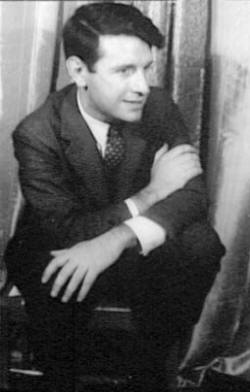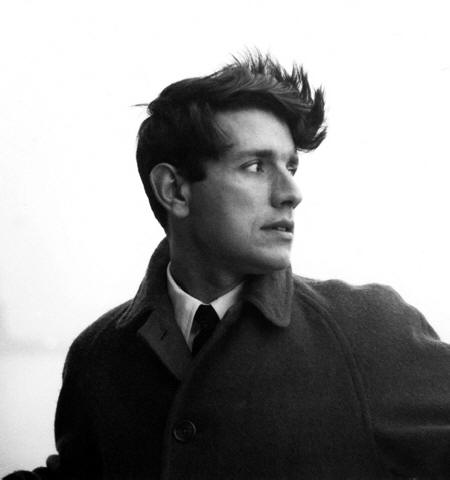

Queer Places:
 Beni Montresor (March 31, 1926 - October 11, 2001) was a stage
designer, film-maker and author. Though best known as a designer of opera
productions in his native Italy and the United States, Beni Montresor also worked as a film director, and a writer and illustrator of children's books.
Montresor became involved with Joseph Raffael after the relationship
of Raffael with
Peter Hujar ended.
Beni Montresor (March 31, 1926 - October 11, 2001) was a stage
designer, film-maker and author. Though best known as a designer of opera
productions in his native Italy and the United States, Beni Montresor also worked as a film director, and a writer and illustrator of children's books.
Montresor became involved with Joseph Raffael after the relationship
of Raffael with
Peter Hujar ended.
The work of Broadway's gay and lesbian artistic community went on display in 2007 when the Leslie/Lohman Gay Art Foundation Gallery presents "StageStruck: The Magic of Theatre Design." The exhibit was conceived to highlight the achievements of gay and lesbian designers who work in conjunction with fellow gay and lesbian playwrights, directors, choreographers and composers. Original sketches, props, set pieces and models — some from private collections — represent the work of over 60 designers, including Beni Montresor.
After studying at art school in Verona, close to his birthplace in Bussolengo, Veneto, Italy, he obtained a film design diploma in Rome. In his 20s, he worked as assistant director, set decorator and designer at the Cine Citta studios, mostly on commercial films. In 1954, he designed Carmine Gallone's Casa Ricordi, and went on to work for many of the celebrated directors of the decade, among them Federico Fellini and Rossellini. Recognition came from Riccardo Freda, for whom he designed Vampiri (1957) and its startling blood red effects.
In 1960, Montresor became costume designer at the Metropolitan Opera in New York, where he met the Italian composer Gian Carlo Menotti, who invited him to design sets and costumes for a staging of Samuel Barber's opera, Vanessa, the opening production of the 1962 Spoleto festival. Two years later, Montresor returned to Spoleto to design the Royal Ballet production of Raimonda, with Rudolph Nureyev and Margot Fonteyn.
Back in New York in 1966, he designed The Magic Flute at the City Center Opera, and published his first children's book, based on the Mozart opera. His decor and costumes for Massenet's Esclarmonde, at the San Francisco Cine Citta studios in 1974 with Joan Sutherland, were highly praised.

He returned often to Italy to design productions for La Scala, beginning with Catalani's Lorelei (1968). Thirty years later, he helped create the ballet The Witches of Venice, based on his own story, with music by Philip Glass. In the 1960s, his ethereal designs for Donizetti's L'Elisir d'Amore, at Covent Garden, were described by one critic as "a storybook view of the Italian countryside". In Verona, he directed and designed a memorable Madame Butterfly (1978), while in 1989, at the Rome Opera, he staged Rossini's Zelmira and Verdi's Falstaff. He staged the first Italian production of Wagner's opera, Die Feen (The Fairies, 1998) at Cagliari's Lirico opera house, and won critical praise for the staging of another rarity, Antonio Salieri's Falstaff ovvero le tre burle in 1998 at the Lecco opera house. In 1999, in Verona, he staged a lavish Merry Widow, which critics complained was too TV-orientated.
In 1969, Montresor directed his first film in America, Pilgrimage, a sincere, if rather obvious, prodigal son road movie. A second, French-made film, La messe dorée (1974), with Lucia Bosé, confirmed that his talents were more in visuals than dramatics.
Delightful company, Montresor will be remembered most of all for having communicated some of his childhood fantasies in design and print. He never married and is survived by a brother.
My published books: